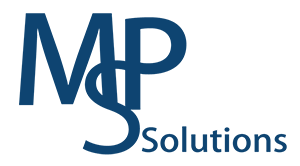How it all started
The ERP Software that we are using now has come a long way from when it first started off in the 1940s. Before the age of software solutions, many companies had issues in managing documents, inventory, and assigning work to employees. The issues had led to a high levels of inefficiency. In this blog, we are going to discuss the evolution of ERP software.
Birth of MRP
To resolve this problem, initial attempts were made in using calculating machines to improve efficiency. Yet, it was only till the 1960s where the Material Requirement Planning (MRP) software was born. This software was designed to eliminate the above mentioned problems. MRP also help companies organize and plan strategically for the materials they need and improve efficiency.
The MRP was a great success and benefited many companies who adopted it. In the 1970s, to keep up with the times, a more advanced version known as the MRPII was launched to further improve efficiency. Not only it retains all the functions of MRP, it also enabled companies to plan their operations more orderly.
However, the MRP software was not perfect. The key flaw was that the MRP is mainly for inventory management and streamlining the manufacturing process. This meant that other functions like accounting, finance and distribution were still handled by other software. As such, these different systems were unable to share information with one another, resulting in many copies of the same information.
In addition, companies also need to maintain many systems, which led to redundancies and extra costs. Thus, companies realized the need to have a single integrated system that handles all company functions. The system should spans across all departments to allow information to be integrated and shared by everyone. Also, the system needs to reduce redundancies, improve efficiency, and enhance cooperation between departments.
Birth of ERP
In the 1990s, the first ERP software was officially introduced to the market, providing a one stop integrated platform for all business functions. The emergence of these ERP software were able to provide an integrated platform that handles all company functions. It allows information to be integrated, and improved the coordination between various departments with real-time data seamlessly flowing between them. Thus, this results in increased efficiency and reduced redundancies.
Unfortunately, at this point of time, small companies were unable to afford the ERP Software for two reasons. Firstly, there was only a handful of licenses and the price was very high so only the huge companies were able to afford. Secondly, the ERP software was too complex to understand back then.
Over the years, the ERP software has evolved alongside with technology. Developers were able to cut down on the complexities of the ERP software so they are easy to understand and use. ERP has also become more cost effective and affordable for smaller companies over the years with the development of the Cloud.
This ensured that both large and small companies were able to utilize ERP software to better manage their business. Other than having lesser complexity and cost, the ERP software has also evolved to become more reliable, secure and efficient than MRP. Finally, it had evolved into the modern ERP software that many companies are using today.

